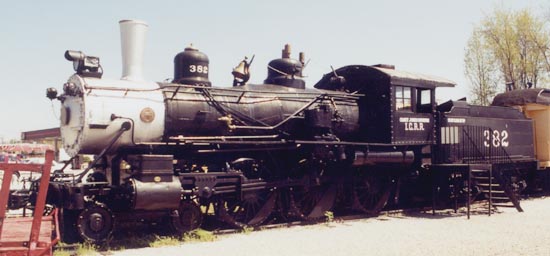
Click here for Part I
In 1772, Oliver Evans created a 21-ton boat on wheels that could travel on both land and water. The vehicle boasted a paddle that helped it glide across the water. A steam engine helped it ride along the land. In 1812, Evans noted:
The time will come when people will travel in stages moved by steam engines from one city to another almost as fast as birds fly – fifteen to twenty miles an hour. Passing through the air with such velocity – changing the scenes in such rapid succession – will be the most exhilarating, delightful exercise. A carriage will set out from Washington in the morning, and the passengers will breakfast at Baltimore, dine in Philadelphia, and sup at New York the same day.
To accomplish this, two sets of railways will be laid so nearly level as not in any place to deviate more than two degrees from a horizontal line, made of wood or iron, on smooth paths of broken stone or gravel, with a rail to guide the carriages so that they may pass each other in different directions and travel by night as well as by day; and the passengers will sleep in these stages as comfortably as they do now in steam stage-boats.
Though it may have been hard to believe in 1812, as a second war with England raged on, Evans turned out to be quite a prophet, though it would be years after his own death in 1819 before his prophecy would be fulfilled.
Like Evans’ own invention, in 1801, Richard Trevithick developed the Puffing Devil, a self-propelled steam carriage. Despite the innovation, the carriage wasn’t much of a success as the vehicle could not travel long distances before running out of steam. However, on Feb. 21, 1804, Trevithick debuted the first steam locomotive to run on rails. The engine ran along track at the Pen-Y-Darren Iron Works in Wales. The locomotive pulled 10 wagons at about 5 mph.
The idea of a public passenger railroad in England dates back to 1818 when a meeting was held in Darlington. It wouldn’t be until 1821, however, that the Stockton and Darlington project begins, with the goal of becoming the world’s first passenger railroad. The project’s original plan called for horse-drawn wagons to be pulled over metal rails.
However, it was a meeting between Edward Pease, the company’s director, and George Stephenson that would forever change the project’s fate. A few years earlier in 1814, Stephenson built the Blutcher, the world’s first railroad steam locomotive. However, Stephenson’s invention is due in large part to William Hedley and Timothy Hackworth. A year earlier, Stephenson learned the duo was planning on building their own locomotive.
Construction on the Stockton and Darlington began in 1822. It would take another three years, however, for the road’s completion. And on Sept. 27, 1825, the Locomotion hauled an 80-ton load of coal for nine miles. Also attached to the Locomotion, which topped speeds of 24 mph, was the Experiment – the world’s first passenger car, which on this day carried a handful of dignitaries.
“The adaption of railways to speed was never, we believe, thought of till the opening, in September, 1825, of the celebrated Stockton & Darlington rail-road, a work which will for ever reflect honour on its authors, for the new and striking manner in which it practically demonstrated all the advantages of the invention,” The Observer noted on April 25, 1830.
Despite the seemingly obvious advantages of a steam-powered locomotive compared to horse-drawn engines, these new inventions weren’t a smash hit from the beginning. At the time, a horse-drawn wagon was cheaper than a wood or coal burning engine, though heavy loads couldn’t be transported as easily.
The Stockton and Darlington featured more than just an experimental train – it featured the world’s first railroad bridge. Designed by Ignatius Bonomi, the bridge crossed the River Skerve.


